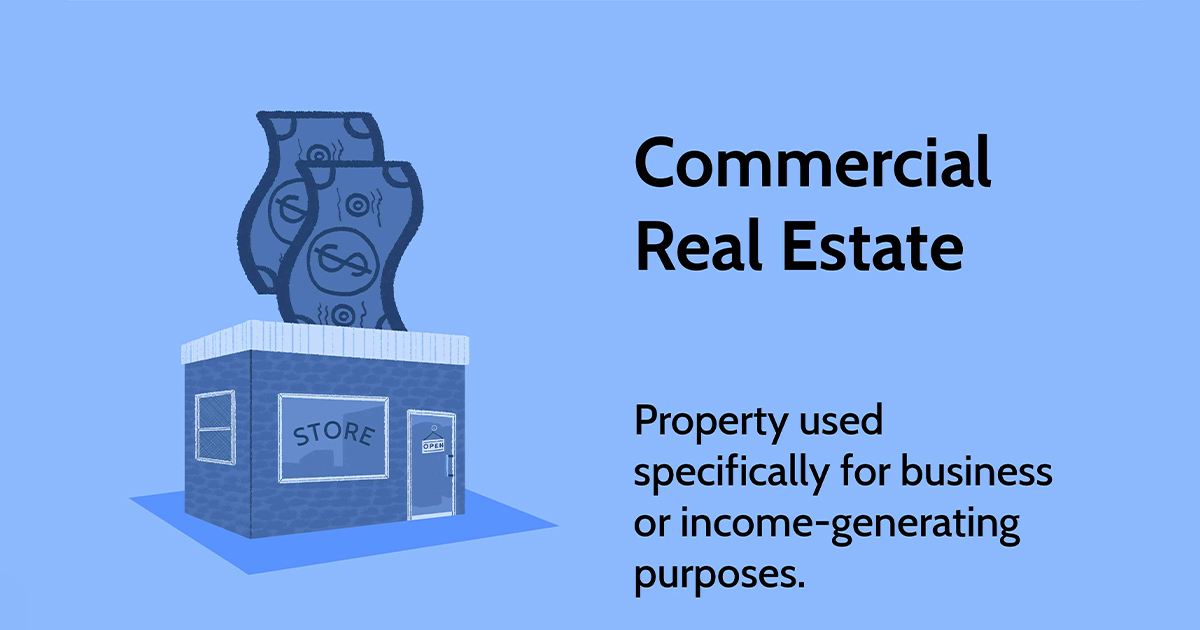Understanding Commercial Real Estate: Types and Considerations
Commercial real estate is a dynamic and expansive realm, encompassing a diverse array of property types, investment avenues, and essential factors. Regardless of whether you are a seasoned investor or a newcomer to this arena, grasping the multifaceted nature of commercial real estate is indispensable for making sound investment decisions. In this in-depth guide, we will delve into the various categories of commercial real estate, explore key investment strategies, and highlight vital considerations to empower you in navigating this intricate yet rewarding market.
Diverse Landscape of Commercial Real Estate
To embark on a successful journey into commercial real estate investment, it is imperative to acquaint yourself with the myriad property types that constitute this sector.
Office Buildings:
Office spaces stand as one of the most ubiquitous forms of commercial real estate. These can range from single-tenant structures to towering skyscrapers housing multiple businesses. The location, layout, and amenities of an office building play pivotal roles in determining its value and appeal to prospective tenants.
Retail Properties:
Retail properties encompass shopping centres, malls, and standalone stores. The prosperity of these properties is often contingent upon factors such as foot traffic, tenant mix, and the demographics of the consumer base. The retail real estate landscape is notably dynamic, subject to shifts in consumer preferences and the rise of online shopping trends.
Industrial Properties:
Industrial real estate includes warehouses, distribution centres, and manufacturing facilities. Location takes centre stage in this sector, with proximity to transportation hubs and streamlined supply chains significantly influencing property value.
Multifamily Properties:
Multifamily properties encompass apartment buildings, condominiums, and townhouses. Investing in multifamily real estate can yield a consistent stream of rental income, making it an enticing choice for long-term investors.
Hospitality Properties:
Hospitality properties, comprising hotels and resorts, cater to travellers and tourists. These properties entail unique operational considerations, encompassing seasonal fluctuations in demand and the imperative of delivering exceptional customer service.
Special Purpose Properties:
Special purpose properties exhibit wide-ranging diversity and may include facilities such as schools, healthcare centres, or religious institutions. These properties are often dedicated to specific functions, necessitating specialised knowledge for profitable investment.
Strategies in Commercial Real Estate Investment
Having identified the category of commercial real estate that captures your interest, it becomes paramount to deliberate upon your investment strategy. Here are several widely employed approaches:
Buy and Hold:
This strategy entails acquiring a commercial property with the intent of retaining it for an extended period, often spanning years or even decades. The primary objectives are to generate rental income and capitalise on potential property appreciation over time.
Fix and Flip:
Fix-and-flip investors actively seek properties in need of renovation or enhancement. After effecting necessary improvements, the aim is to sell the property at a profit. This approach necessitates astute discernment of value-add opportunities and adept management of construction projects.
Real Estate Investment Trusts (REITs):
REITs represent publicly traded entities that own and manage income-producing real estate. Investing in REITs offers diversification and liquidity, albeit at the cost of diminished direct control over property management.
Development:
For individuals possessing a higher risk tolerance and a vision for crafting new commercial properties, real estate development stands as a potentially lucrative strategy. It encompasses the acquisition of land, securing permits, and overseeing construction to bring a project to fruition.
Triple Net Leases (NNN):
NNN leases transfer numerous property expenses, including taxes, insurance, and maintenance, to the tenant. Investors, in turn, receive a reliable stream of rental income while bearing fewer operational responsibilities.
Crucial Contemplations in Commercial Real Estate
Effective engagement in commercial real estate investment demands meticulous planning and scrupulous attention to an array of considerations:
Location:
The adage “location, location, location” rings resoundingly true in the context of commercial real estate. An advantageous location can wield profound influence over a property’s worth, its potential for rental income, and its overall success.
Market Trends:
Keeping abreast of market trends, encompassing indicators like vacancy rates, rental rates, and economic benchmarks, plays an integral role in shaping investment decisions.
Due Diligence:
Conducting exhaustive research and evaluation of prospective properties is indispensable. Due diligence embraces property inspections, scrutiny of financial records, and assessments of the competitive landscape.
Financing:
The meticulous consideration of financing options is pivotal. Commercial real estate financing can be intricate, with variables such as interest rates and loan terms significantly impacting investment profitability.
Lease Agreements:
Lease agreements stand as the linchpin of commercial real estate. Ensuring favourable lease terms and cultivating a robust understanding of tenant responsibilities is paramount.
Property Management:
When self-management isn’t a practical option, the thoughtful selection of a capable property management team becomes critically significant. These professionals are entrusted with overseeing day-to-day operations, handling maintenance tasks, and managing tenant relationships.
Risk Assessment:
Conducting a methodical evaluation and subsequent risk mitigation in connection with your investment is indispensable. Factors to take into account encompass market volatility, tenant turnover, and the potential for regulatory shifts, such as zoning regulations changes.
Taxation:
Achieving a comprehensive grasp of the tax implications associated with your investment is crucial. The realm of commercial real estate taxation is intricate, necessitating collaboration with a seasoned tax professional to optimise your tax strategy.
Sustainability:
In an age increasingly attuned to sustainability and energy efficiency, these considerations assume pivotal roles within the sphere of commercial real estate. The integration of sustainable features possesses the potential to enhance property value and attract environmentally-conscious tenants.
Exit Strategy:
Maintaining a well-defined exit strategy is fundamental. Whether your intention is to retain the property for the long term or divest it after a specific duration, having a clear exit plan is instrumental in achieving your investment objectives.
Conclusion
In summary, commercial real estate offers an array of opportunities for those willing to invest the requisite effort and engage in thorough research to achieve success. By acquiring a nuanced understanding of distinct property types, selecting a suitable investment approach, and carefully weighing critical factors, you can confidently navigate the complex landscape of commercial real estate and potentially reap substantial rewards. It is essential to remember that each investment comes with its distinct set of risks and rewards, highlighting the importance of seeking professional advice when necessary and staying vigilant in monitoring developments in this continually evolving arena.
FAQ:
Q1.What are some common sustainability features in commercial real estate, and how can they enhance property value?
A1: Common sustainability features in commercial real estate include energy-efficient lighting, HVAC systems, renewable energy sources, and water conservation measures. These features not only reduce operational costs but also attract environmentally-conscious tenants, potentially leading to higher rental income and property value appreciation.
Q2: What are the key factors to consider when formulating an exit strategy for a commercial real estate investment?
A2: When planning an exit strategy, it’s essential to consider factors such as market conditions, property performance, investment goals, and tax implications. Options may include selling the property, refinancing, or transitioning to a different investment strategy. A clear exit plan helps ensure that your investment objectives are met effectively.
Q3: What are the typical eligibility criteria and requirements for securing financing for a commercial real estate investment?
A3: Eligibility criteria for financing may include factors like creditworthiness, income stability, property appraisal, and the loan-to-value ratio. Lenders often assess the property’s income potential and the borrower’s ability to repay the loan. Specific requirements can vary among different financing options.
Q4: How does a Triple Net Lease (NNN) benefit property owners, and what are the potential drawbacks for tenants?
A4: A Triple Net Lease (NNN) benefits property owners by transferring property expenses, such as taxes, insurance, and maintenance, to the tenant, resulting in a predictable income stream. However, tenants may face increased financial responsibilities, including potential cost fluctuations, which they should factor into their lease considerations.
Q5: What are some practical strategies for conducting thorough risk assessment in commercial real estate, especially for first-time investors?
A5: First-time investors can conduct thorough risk assessment by seeking guidance from experienced professionals, researching market conditions, analysing tenant leases, performing property inspections, and considering factors like location and economic indicators. Building a comprehensive risk mitigation plan is essential for minimising potential pitfalls.
Q6: Can you explain the concept of a 1031 exchange in commercial real estate and how it can benefit investors from a tax perspective?
A6: A 1031 exchange allows investors to defer capital gains taxes by reinvesting the proceeds from the sale of one commercial property into another “like-kind” property. This tax-deferral strategy can enable investors to grow their real estate portfolios without immediate tax consequences, potentially enhancing their overall returns.
Q7: What are some key milestones and considerations when planning a commercial real estate development project, and how can project timelines be effectively managed?
A7: Planning a commercial real estate development project involves phases such as site acquisition, obtaining permits, construction, and leasing. Effective project management and timeline control are critical. Strategies like conducting feasibility studies, hiring experienced project managers, and having contingency plans can help ensure projects stay on schedule and within budget.









